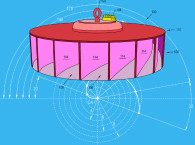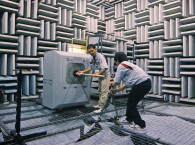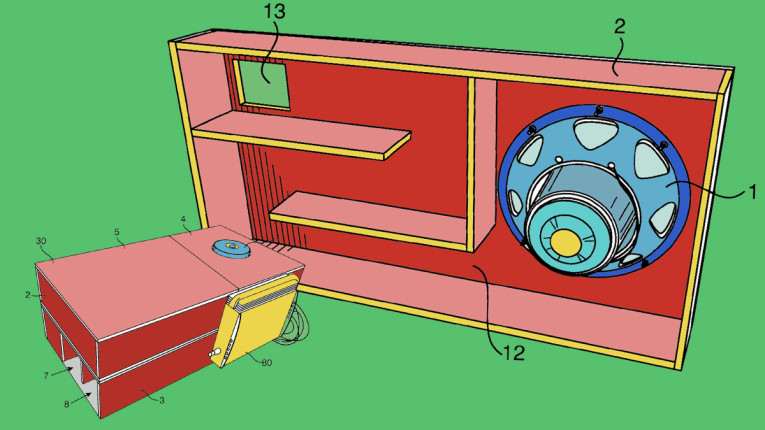
Dynamic Acoustic Waveguide
Patent Number: 9,432,764
Inventors: William Eugene Wheeler (High Ridge, MO)
Assignee: William Eugene Wheeler (Valley Park, MO)
Filed: November 11, 2014
Current CPC Class: H04R 1/2853
Granted: August 30, 2016
Number of Claims: 16
Number of Drawings: 13
Abstract from Patent
A loudspeaker and a method of operation that allow for the production and emphasis of extremely low bass tones. The loudspeaker generally is formed from a loudspeaker driver cone of conventional type which is placed in a very small enclosure with two waveguides attached thereto. A smaller balance waveguide is positioned forward of the face of the cone and a larger tuning waveguide is positioned to the side of the cone. The cross-sectional area of the aperture connections of both waveguides to the enclosure are small compared to the cross-sectional area of the loudspeaker driver cone.
Independent Claims
1. A loudspeaker comprising: an enclosure having a back side and an opposing front side, said enclosure enclosing a loudspeaker driver cone having a cross-sectional area at a forward face, said loudspeaker driver cone being disposed in said enclosure such that said cross-sectional area is disposed concentrically with said opening and is generally flush with said front side; a turning waveguide coupled to said enclosure at a position lateral to the loudspeaker driver cone, said turning waveguide extending a from said enclosure in a direction generally parallel to the plane of said cross-sectional area; and a balance waveguide coupled to said front side of said enclosure at said forward face of said loudspeaker driver cone generally coaxially with said cross-sectional area, said balance waveguide being shorter than said tuning waveguide; wherein said tuning waveguide includes a greater volume of air than said balance waveguide which in turn includes a greater volume of air than said enclosure; and wherein said coupling of said balance waveguide to said enclosure has a cross-sectional area smaller than said cross-sectional area of said forward face of said driver cone.
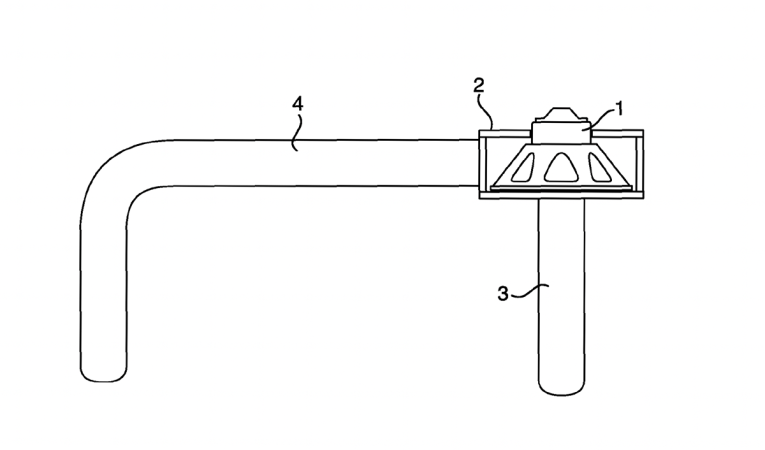
13. A method of producing a sound wave of less than 60 Hz, the method comprising: providing: an enclosure having a back side and an opposing front side, said enclosure enclosing a loudspeaker driver cone having a cross-sectional area at a forward face, said loudspeaker driver cone being disposed in said enclosure such that said cross-sectional area is disposed concentrically with said opening and is generally flush with said front side; a tuning waveguide coupled to said enclosure at a position lateral to said loudspeaker driver cone by an aperture having a cross-sectional area less than said cross-sectional area of said forward face, said tuning waveguide extending from said enclosure in a direction generally parallel to the plane of said cross-sectional area; and a balance waveguide coupled to said enclosure at said forward face of said loudspeaker driver cone generally coaxially with said cross-sectional area by an aperture having a cross-sectional area less than said cross-sectional area of said forward face; driving said driver cone to produce a sound wave at said forward face; directing at least a portion of said sound wave into both said tuning waveguide and said balance waveguide in a manner that said sound wave upon exiting said tuning waveguide and said balance waveguide is less than 60 Hz.
Reviewer Comments
In 1935, P. G. A. H. Voigt in British patent number 447,749, was the first to invent a system with a tuned pipe coupled to the front of a woofer transducer and a second tuned pipe, of a different length, coupled to the back of a woofer transducer.
In 1966, L. H. Mitchell in US 3,393,766 was the first to file for a US patent on this type of system. Mitchell did not cite the earlier Voigt patent. Later on, in 1982, Amar Bose filed for US Patent 4,628,528 wherein Bose Corp. popularized and trademarked it as the Bose Acoustic Wave Music System. The Bose patent did not cite either of the earlier inventors’ patents.
In this patent under review, William Wheeler is the most recent inventor to re-invent this classic architecture. The Wheeler patent is rather limited in terms of any technical information or target parameters relative to optimizing the system for maximum performance. (By comparison, the Bose patent is fairly rich in detail and a recommended read for anyone interested in resonant pipe type systems.)
In claiming an improvement over the Bose-type system, Wheeler claims that the Bose architecture does not operate well below 40 Hz with any substantial volume, even though Bose sold the Acoustic Wave Cannon to the professional market for many years, delivering 30 Hz at very high levels in large arena environments.
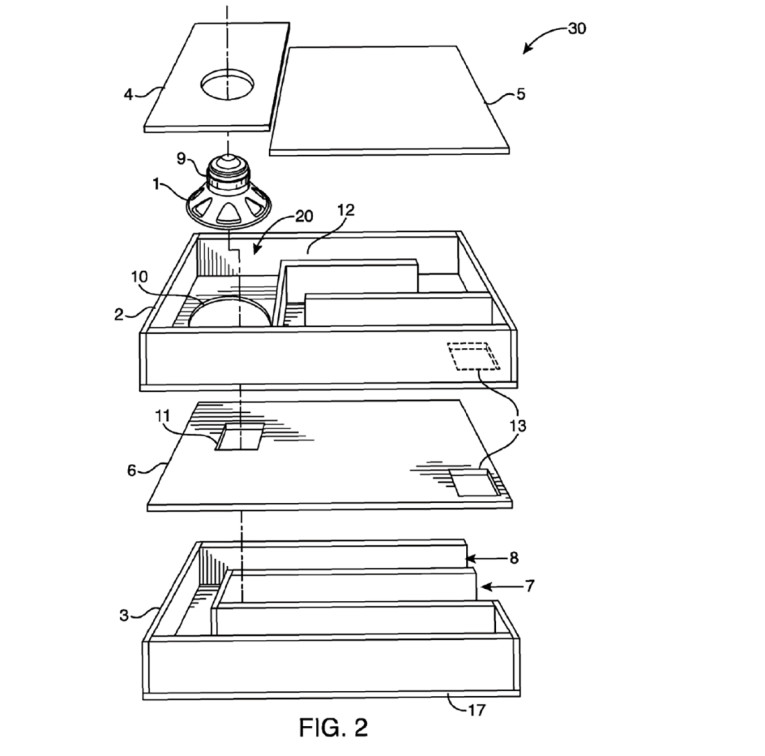
In the Wheeler disclosure, the longer waveguide is called the “tuning” waveguide and the shorter waveguide is called the “balance” waveguide. There is no explanation for the unconventional terminology. It is stated that the “balance” waveguide will preferably have a length of 50%, 33%, 25% or less the length of the “tuning” waveguide, although it is mentioned that even these length definitions are not actually required. Not a particularly well-defined parameter and the purpose of the “balance” waveguide and its functional relationship to the rest of the system is not disclosed.
The cross-sectional areas of the waveguides are stated to be preferably less than 75% of driver surface area (Sd) but may be less than 50%, 25%, or between 25% and 50%. This relationship of reduced cross-section area relative to the driver cone surface area is a primary limitation of the claims. In the disclosure it doesn’t describe what the effects are when this configuration is implemented. But, it isn’t novel or defined, as in the Bose ‘528 case, where there is significant discussion of reducing the cross-sectional area of the waveguides to lower the “Q” of the quarter-wave, and multiples of quarter-wave, resonances relative to under-damping the range between the quarter wave resonances, to achieve the smoothest possible response while reducing the overall size of the enclosure.
Overall, it is unclear what the primary advantage or novelty is for the invention (or whether it is actually an invention) but if one were to optimize the system as per what is taught in the Bose patent, one could end up with a reasonably high-performance enclosure system.
This article was originally published in Voice Coil, November 2016.





